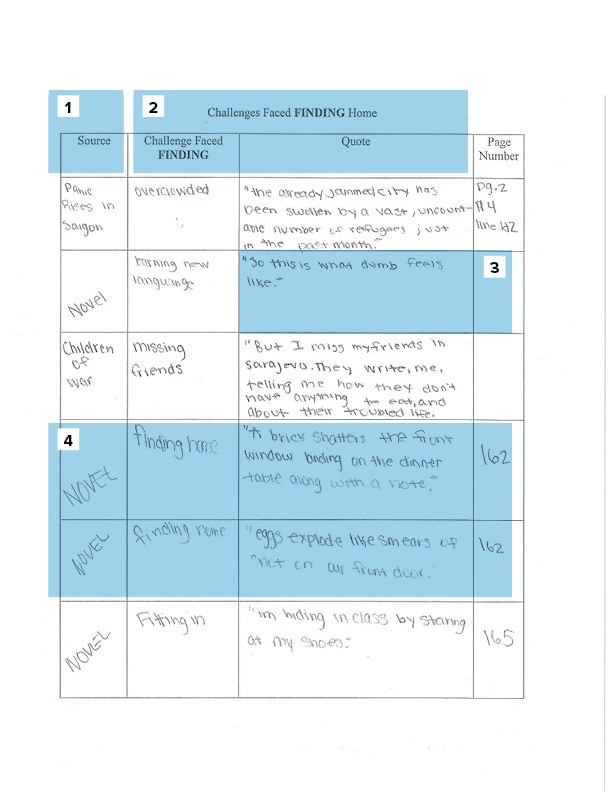All students should graduate from high school ready for college, careers, and citizenship.


1. CCSS Alignment
As shown in the “Source” column, the student uses multiple texts, both literary and informational, from which to draw evidence. These multiple sources will be cited throughout the essay.
Standard referenced:
W.8.9: Draw evidence from literary or informational texts to support analysis, reflection, and research.
2. CCSS Alignment
The challenges named in the Challenge Faced column and the corresponding quotes demonstrate the student’s comprehension of grade level literary and informational text.
Standards referenced:
RL.8.10: By the end of the year, read and comprehend literature, including stories, dramas, and poems, at the high end of grades 6–8 text complexity band independently and proficiently.
RI.8.10: By the end of the year, read and comprehend literary nonfiction at the high end of the grads 6–8 text complexity band independently and proficiently.
3. CCSS Alignment
This quote shows the student’s understanding of how dialogue between characters in literary text (Ha and her mother) can be used as evidence toward the claim that a challenge in finding a home as a refugee includes learning a new language. You will notice that in the essay, the student uses a different section of dialogue to support the claim.
Standard referenced:
RL.8.3: Analyze how particular lines of dialogue or incidents in a story or drama propel the action, reveal aspects of a character, or provoke a decision.
4. CCSS Alignment
The student cites text based evidence from literature to support the refugee experience of finding home. Later in the essay, the student replaces this evidence with stronger evidence to support the point.
Standards referenced:
RL.8.1/RI.8.1: Cite the textual evidence that most strongly supports an analysis of what the text says explicitly as well as inferences drawn from the text.
